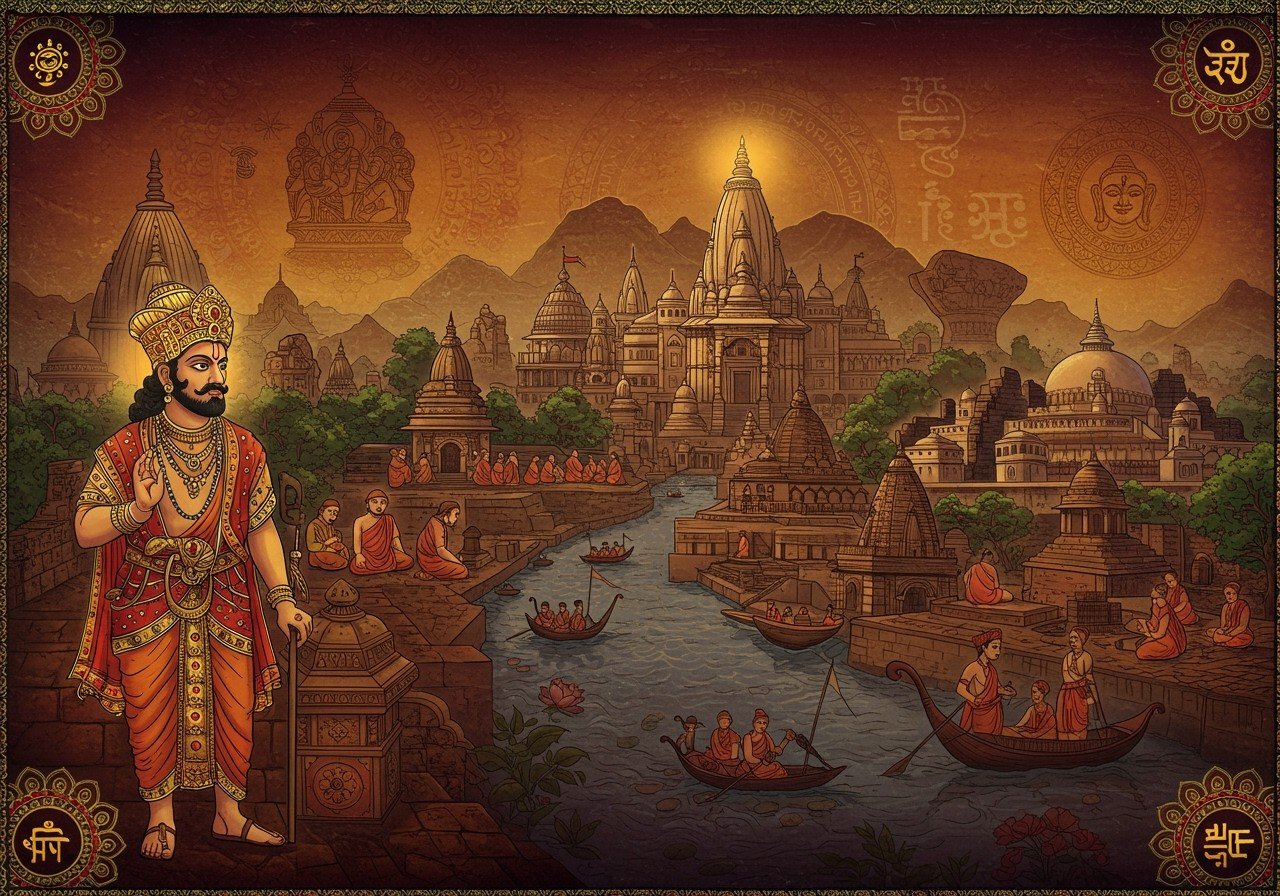
Bihar, nestled in eastern India, boasts a vibrant and multifaceted history, encompassing three distinct regions: Magadha, Mithila, and Bhojpur. Archaeological discoveries at Chirand reveal settlements dating back to the Neolithic age. During the Early Vedic period, several kingdoms flourished in Bihar, including Videha, the legendary home of Princess Sita from the Ramayana. Bihar has served as a prominent seat of imperial powers and a focal point of Indian culture and civilization. Its capital, Patna, stands as a testament to its historical significance, and the state possesses a notable legacy in Urdu journalism and poetry.
Ancient Bihar: A Cradle of Civilization
Ancient Bihar’s prominence is marked by its role as a cradle of civilization. The Magadha Empire, one of the earliest and most influential empires, played a crucial role in shaping early Indian history. The Mauryan Empire, particularly under Emperor Ashoka’s reign, witnessed the widespread dissemination of Buddhism across Asia. Nalanda University, a renowned ancient center of learning, attracted scholars from all corners of the globe. The Gupta Empire’s influence further propelled significant cultural and scientific advancements. Archaeological sites like Pataliputra and Vaishali offer glimpses into Bihar’s rich past.
Medieval Bihar: Political and Cultural Transformations
The medieval period brought significant political and cultural changes to Bihar. The Pala Empire championed Buddhism and fostered academic scholarship. Bihar held a vital role in the Delhi Sultanate and Mughal Empire, witnessing notable battles and administrative shifts. Architectural marvels from this era, including magnificent mosques and imposing forts, dot the landscape. Medieval Bihar’s socio-economic landscape thrived on bustling trade and robust agricultural practices. Cultural syncretism emerged as a result of various invasions and settlements.
Colonial Bihar: Socio-Political and Economic Shifts
The colonial era ushered in substantial socio-political and economic transformations in Bihar. British rule significantly impacted Bihar’s agrarian economy through the implementation of the Permanent Settlement. Bihar played a pivotal role in the Indian independence movement, marked by key events like the Champaran Satyagraha led by Mahatma Gandhi. Educational reforms led to the establishment of esteemed institutions like Patna University. This period also witnessed socio-cultural shifts, with the spread of Western education and ideas. Regional literature and the press began to flourish during this time.
Post-Independence Bihar: Development and Progress
Following independence, Bihar encountered challenges in governance, infrastructure development, and social justice. Influential political figures like Jayaprakash Narayan and Nitish Kumar shaped national policies. Educational reforms continued with the establishment of new universities and research centers. Industrial and agricultural advancements aimed at modernization and economic growth were actively pursued. Efforts towards cultural revival and preservation remain ongoing in contemporary Bihar.
Bihar’s Interwoven History with India
Bihar’s history is inextricably linked with the broader narrative of Indian history. The propagation of Buddhism and Jainism from Bihar significantly influenced religious practices across India. During the Indian freedom struggle, leaders from Bihar played key roles, enriching the national narrative of independence. Bihar’s cultural exchanges with neighboring regions like Bengal showcase shared traditions and historical ties. Contributions in arts, literature, and philosophy from Bihar have profoundly shaped Indian culture.
A Shared Heritage: Bengal and Bihar
Bihar and Bengal share a deep-rooted historical relationship, having been part of the Magadha Empire in ancient times. The Pala Empire’s reign extended over both regions during the medieval period. Colonial influences led to administrative and cultural exchanges between Bengal and Bihar. Post-independence, political alliances and regional cooperation have characterized their relationship. Cultural and linguistic ties between these regions reflect an interconnected heritage. Both regions continue to collaborate socio-economically while addressing contemporary challenges together.
Exploring Bihar’s Heritage Through Ritual Items
Poojn.in, India’s leading provider of cultural goods and services, offers authentic ritual items that connect you with Bihar’s rich heritage and Indian traditions. For Bengali weddings, we offer the traditional Topor Mukut, a handcrafted crown made from shola, essential for Bengali marriage rituals. Our pure cotton Gamcha (traditional towel) is another significant item used in various ceremonies across Bihar and India. As India’s largest Dashakarma bhandar, Poojn.in helps preserve traditional rituals by providing genuine ceremonial items. Explore our collection at www.poojn.in.
Conclusion
Bihar’s journey through the ages, from ancient times to the present day, reveals its profound impact on Indian history. From the rise and fall of empires to the spread of religions and the struggle for independence, Bihar’s contributions are invaluable. Understanding Bihar’s history enhances our appreciation of India’s diverse and interconnected past. It also inspires us to preserve and celebrate the traditions and achievements that define Bihar’s enduring legacy.
FAQs on Bihar and Indian History
What is Bihar’s role in Indian history?
Bihar played a pivotal role in ancient India with the rise of empires like the Maurya and Gupta dynasties, and as the birthplace of Buddhism and Jainism. Its influence continued through the medieval and colonial periods, shaping India’s cultural and political landscape.
How did the Maurya Empire influence India?
Founded in Bihar, the Maurya Empire unified much of the Indian subcontinent, establishing a strong centralized government and fostering cultural development. Emperor Ashoka’s embrace of Buddhism further extended Bihar’s impact across Asia.
Why is the Gupta period considered a Golden Age?
Originating in Bihar, the Gupta period witnessed remarkable advancements in various fields, including science, mathematics, astronomy, literature, and art, earning it the title of India’s Golden Age.
What is the historical connection between Bengal and Bihar?
Bengal and Bihar share a long history, having been part of ancient kingdoms like Magadha. Cultural, political, and administrative exchanges between the two regions have shaped their interconnected development.
What was Bihar’s contribution to India’s independence?
Bihar played a crucial role in the Indian independence movement, with leaders like Rajendra Prasad and Jayaprakash Narayan actively participating in the struggle against British rule.


